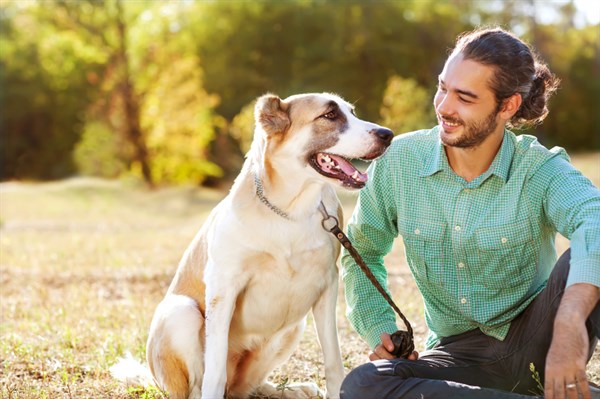Rob Howard: The subtle shift in evolution that made dogs our best friends
Dogs are shockingly, bizarrely in tune with their human companions. Here’s why.

For thousands of years, dogs have been our guardians, our farmhands and our friends. That unique relationship has made them one of the most successful species on earth and a fascinating case study in rapid, modern evolution. Let’s delve into the cognitive science that reveals what makes dogs so special, and we trek into prehistory to learn how wolves transformed into their cuter canine counterparts.
we learn that dogs are shockingly, bizarrely in tune with their human companions. They’re able to consistently follow our gestures (we point, they fetch) and our line of sight (if you look at something without moving your head, your dog can follow your eyes). In both of those tasks, dogs consistently outperform both chimpanzees and human babies. (Dogs are cognitively on par with a two-year-old child.) The typical dog can build a vocabulary of dozens of human words, and some of the most skilled canine linguists learn more than a hundred words and can fetch objects based on an abstract category, like “green.”
To anyone who’s ever played with a dog, these skills are obvious to the point of being taken for granted — but it’s a unique phenomenon in nature, and especially notable when you consider the many other mammals who, from a brain development standpoint, should be outfoxing dogs at every turn.
Likewise, humans have developed innate capacities to understand and communicate with dogs.
Studies have shown that the typical human can accurately judge a dog’s emotion and intent (angry, scared, alerting to an intruder, etc.) based solely on hearing her bark — even if they don’t know the dog and even if they don’t have dogs of their own. Again, that seems obvious, but could you say the same about the vocalizations of a dolphin or a gorilla?
And that brings us to the historical and evolutionary question — why are our dogs our best friends? The broad strokes are well known: tens of thousands of years ago, wolves scavenged from villages, and some of those wolves were more inclined than others to be friendly to humans, thus benefitting from peacefully scavenging more human food. Those friendly wolves became dogs.
But why exactly, and by what mechanism, does a vicious hunter become an adorable pooch who sleeps in your bed?
To answer this question, researchers studied an obscure breeding experiment in Russia and took some cues from the evolution of our fellow apes. They found that selecting for just one trait — non-aggression — yields all the other traits that we associate with the difference between wolves and dogs. In other words, ancient humans did not breed wolves to become smaller, more docile, more juvenile, or cuter. In fact, if you simply choose the least aggressive members of any group over and over again, you will inadvertently breed all those traits solely by selecting for non-aggression.
The Russian experiment accomplished this with foxes in captivity over the course of several decades (watching the documentary is worth it just to visit this strange laboratory). The authors also draw parallels to our own evolution, proposing that both humans and dogs were, in effect, selected for non-aggression. Our social structure made less-aggressive individuals more successful as our societies became more complex, and in turn we selected for the same trait in dogs. Contrast humans with chimpanzees, our closest (and extremely aggressive) relatives, and you see many of the same differences in appearance and behavior that distinguish dogs from wolves.
We are smaller, gentler and smarter because we are naturally domesticated apes, and we hang out with little wolves who are a lot like us.